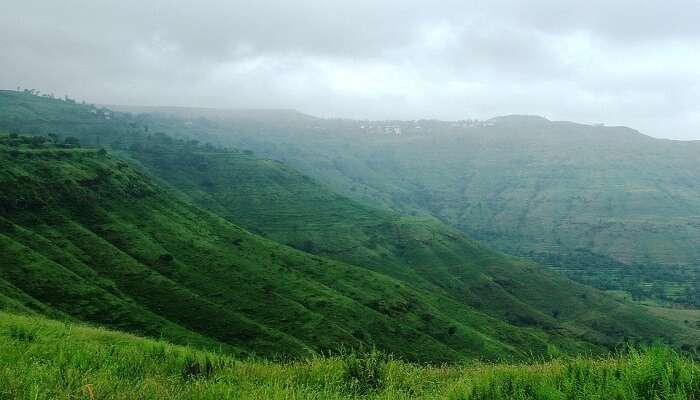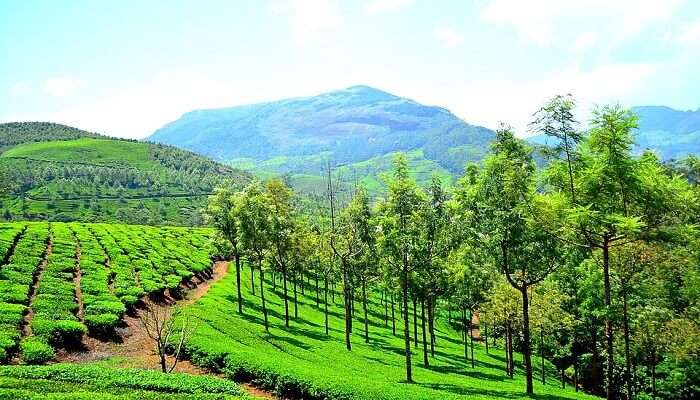Unveiling The Wonders Of Melukote Temple In South India In 2025
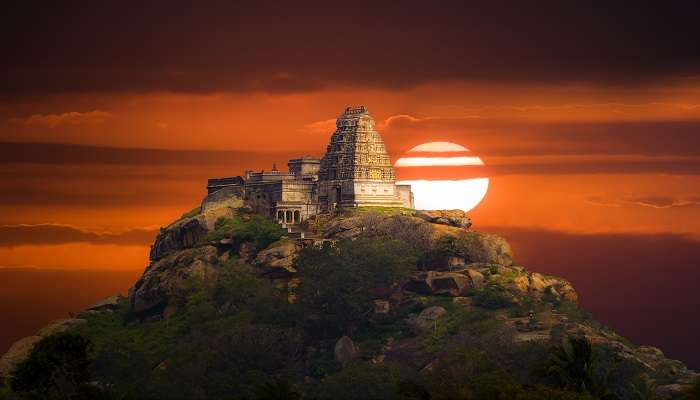
If you wish to travel to the earthly representation of god, there may not be many options better than the iconic Melukote Temple. Offering a brilliant fusion of creative ambition and spiritual devotion, this temple is a must-visit in your trip to Karnataka. The scale, symmetry and splendour of this temple are worth appreciating. But what if you are unable to see its most rewarding sections? What if you don’t know the history of the temple? Well, all you need is a travel guide blog that will help you. This is what this blog will do- help you by addressing everything about Melkote Temple.
Melukote Temple: Travel Guide To The Nidus Of Ancient Heritage
Join us on this voyage to the famous Melukote Temple as we explore the ideal ways to explore the place.
1. Overview Of Melukote Temple
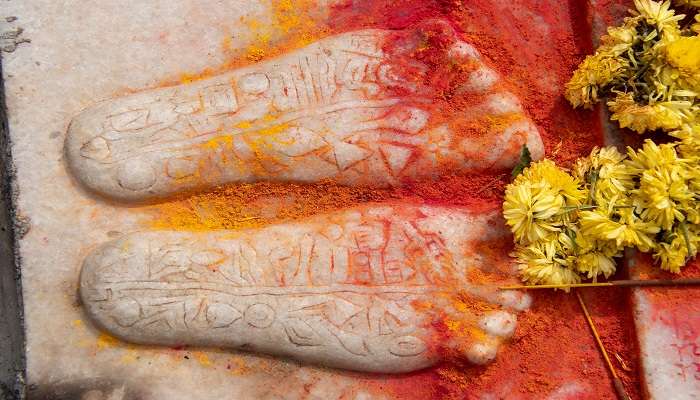
Thirunarayanapura, also known as Cheluvanarayana Swamy Temple or Melukote Temple, is a religious spot located near Melkote, the Mandya District of Karnataka. The temple is perched atop rocky hills with a view of the Kaveri valley. The temple is categorised as one of the Vaishnavate tradition’s 108 Abhimana Kshethrams. It would be incomplete to visit Mandya or Mysore without visiting the Cheluvanarayana Swamy temple. Melukote is a must-see destination in Karnataka, situated 133 km from Bangalore and 50 km before Mysore on the Bangalore-Mysore highway.
In Kannada, “Melu” means top and “Kote” means fort. Therefore, this ancient temple, situated at an elevated hill, gets its name. This is a well-known Karnataka pilgrimage site. Historians claim that because the revered Vaishnava saint Sri Ramanujacharya spent 14 years living here in the 12th century, the area gained notoriety and grew to be a significant Vaishnava centre. However, as per the records, the temple was there even before Sri Ramanujacharya paid a visit.
Best time to visit: All time
Famous for: Spiritual
Must Read: Trekking Near Mysore
2. Temple Features
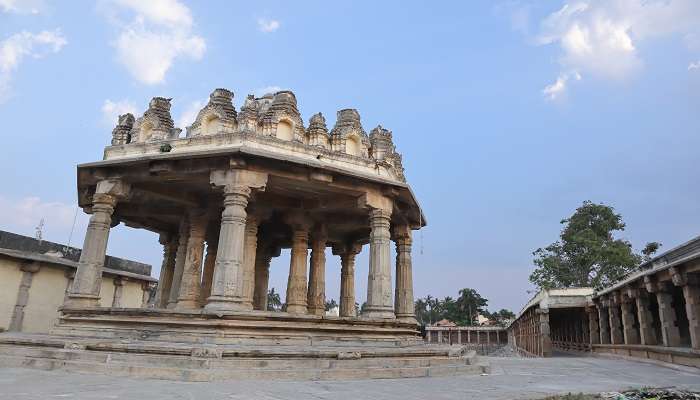
There are two main temples on the Melkote temple grounds, together with a Sanskrit library, a step-well pond and many other features. It is believed that Lord Krishna erected the major temple, known as Thirunarayana or Cheluvaraya, which is devoted to Lord Vishnu. The Wodeyars, a Mysore royal dynasty, serve as the current patrons of the temple. Devotees from all over the state and its neighbouring state swarm to the temple. Today, Melukote Temple is a well-known site that has increased tourism in Karnataka.
The temple is open to tourists and devotees every day from 7.30 am to 8 pm. There is a two-hour lunch break from 1.30 pm to 3.30 pm. During the festival days, temple schedules are adjusted to accommodate a high number of pilgrims. You can get to the temple easily on your trip to Mystore. Many travellers visit here on their way from Bangalore to Mysore, in the Mandya district. The distance between the temple town and Mysore is only 50 km and 113 km, respectively.
Timings: 6 Am – 2 Pm
Famous for: Travel
3. Establishment Of Melukote Temple
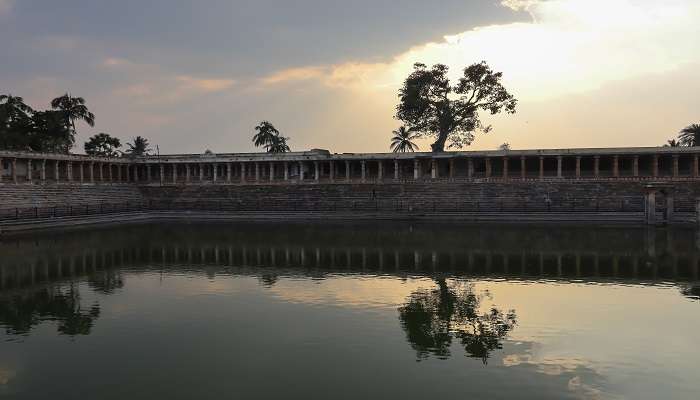
There are many mythological stories that reveal the establishment and roots of temple construction. The most popular one is that of Lord Vishnu. Folklore has it that in a dream, Lord Vishnu gave Ramanujacharya the command to relocate to Melkote. Melkote was the location of the sacred soil. The order was given following Ramanajucharya’s appointment as the rajguru of the Hoysala Empire. According to traditional accounts, the trip was undertaken in order to find Srivaishnava Urdhva Pundra, who was in need of namam clay, which was plentiful in Melkote.
When he travelled, he discovered the sacred soil and a god’s vigraha that had been established in the Bahudhanya year (1099 CE) as the deity Tirunarayana of Melkote. This led to the founding and establishment of Melukote Temple. In accordance with Pancharatra agama, the god Pushyamasa Shukla Paksha Chaturdashi was established. Ramanuja worshipped it for three days, then recited the Tamil Vedas and met Kumbhabhishekham. The temple was built using 5000 Gadyanas approved by Vishnuvardhana and it was finished in 1104 CE. The Yadugiri Yathiraja Mutt was subsequently built so that a sanyasi might reside there and oversee the temple’s operations.
Timings: 6 Am – 2 Pm
Famous for: Mythological
Suggested Read: Chamundeshwari Temple
4. The Architecture Of Melukote Temple
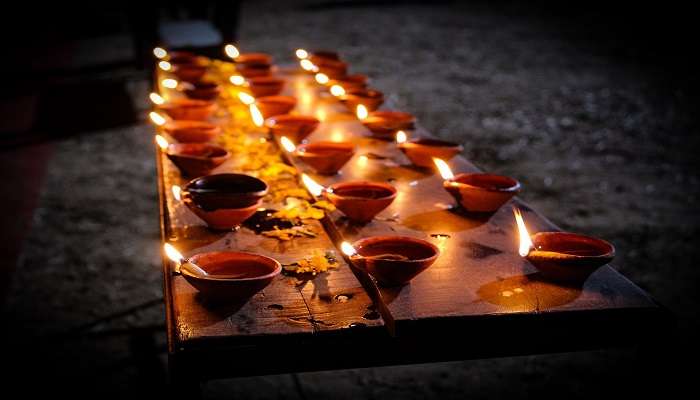
The Melukote temple has intricately carved pillars along its inside and a dome-shaped roof adorned with statues. Cheluvanarayana Swamy, also called Tirunarayana or Cheluvapille Raya is the ruling goddess here and established in a prominent position. She is a manifestation of Lord Vishnu. The name Ramapriya was another name for the deity, revealed as per the inscriptions of the temple. The god Cheluvanarayana Swamy is represented by the utsavamurthi, a metal idol sculpture used in processions and some religious rites. This metallic figure was once lost, but Sri Ramanujacharya is said to have found it.
According to the Mysore Archaeological Department’s annual report, the presiding deity of this temple was already a well-known object of worship when Sri Ramanujacharya was worshipped at the shrine in December 1098 CE. This was identified based on the strength of epigraphic evidence. Additionally, this was before Sri Ramanujacharya visited the Mysore region to utilise his power to have the temple restored or rebuilt. The lithic documents from that era also clearly show the presence of Vaishnava devotion and Tamil influence in the architecture of Melukote Temple. The government is in charge of all three crowns, which are carried to the temple once a year to be placed on Cheluvanarayana Swamy’s figure.
Timings: 6 Am – 2 Pm
Famous for: Architectural
5. Places To See Around Melukote Temple
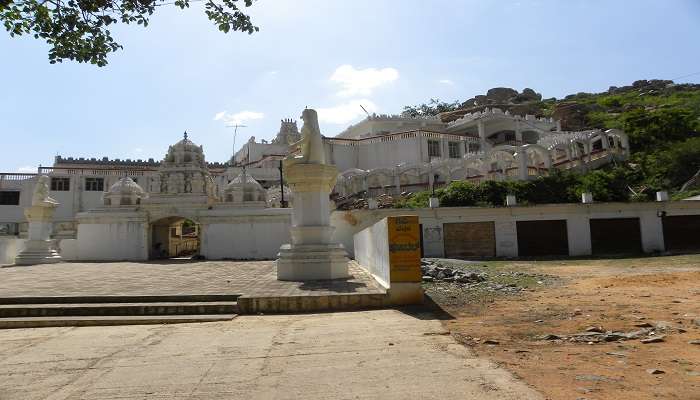
Various other temples and tourist spots surround Melukote Temple, all having equal importance and magnificence. One of Melkote’s top attractions and a prominent pilgrimage hub is the Cheluvanarayan Swamy temple. Another great place to visit is Yoganarasimha Swamy Temple. The temple’s principal draws are the step-well and the pond known as Kalyani. This stunning example of Hoysala architecture was created during that dynasty. And is a well-liked destination for both history buffs and pilgrims. This temple is associated with many myths and stories, which the followers of the temple also accept as true.
If you want to divert your route from temples, you may choose to visit the nearby Melukote Wildlife Sanctuary. It is a unique place that is well worth a visit. It was established in 1974 primarily to safeguard wolves. At first, it was home only to wolves, but subsequently, jungle cats, leopards and numerous other common wild species were introduced. The refuge is a haven for avian enthusiasts. The refuge is roughly 10 miles away and takes 15 to 20 minutes to get to. Another good option is the Sanskrit Library. The place dates back several centuries to the period of Ramanujan. It was founded in 1854 and is among the state’s oldest educational establishments of its sort. Sanskrit, English, Kannada and Vedic manuscripts and literature are all housed in the library.
Timings: 5 Am – 12 Pm
Famous for: Tourism
Suggested Read: Ooty To Mysore Road Trip
6. Getting There And Other Important Information
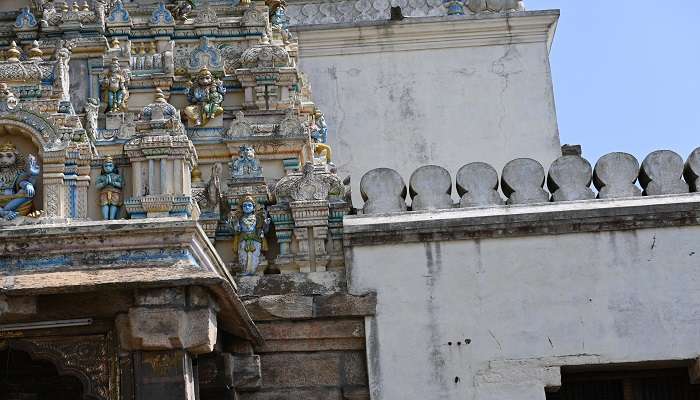
Melkote is located 35 kilometres from Srirangapatna and roughly 50 kilometres northwest of the city of Mysore. Depending on your location and preferred mode of transportation, there are multiple methods to get to Melukote Temple. Coming from far away, the Kempegowda International Airport in Bengaluru is located roughly 140 kilometres from Melukote. From there, you can get to Melkote via bus or cab. Mandya Railway Station, located roughly 45 kilometres from Melkote, is the closest train station. When it comes to roadways, Melkote has excellent connections. There are plenty of regular buses that arrive from big towns like Bengaluru, Mandya and Mysore.
There is important information you need to know before visiting the temple. The temple has around 500 stairs, which you need to climb to enter. However, you can drive to the parking base (the best option is the neighbourhood auto-rickshaw) and then up the remaining 160–170 stairs.
Vairamudi Festival is celebrated with immense joy at Melukote. The only month the Vairamudi festival is held is March, the ideal time to come to this temple. The hike can be a bit tough in the summer and hence, so make sure that you bring drinking water and sun protection.
Ways Of transportation: Multiple ways
Famous for: Amenities
Further Read: Things To Do In Mysore
In case you are wondering if there is a place in Mysore that can help you take a deep look into your inner subconscious, then you are in for a treat at the Melukote Temple. The spiritual spot not only acts as a famous tourist spot but also embraces you in spiritual essence and interesting mythological stories. Book your trip to Mysore today and explore all Melukote Temple has to offer.
For our editorial codes of conduct and copyright disclaimer, please click here.
Cover Image Source: Shutterstock
Frequently Asked Questions About Melukote Temple
What about the timings of the Melukote Temple?
The usual visiting hours for the Melukote temple are 7:30 am in the morning to 1 pm at noon and 4:30 to 6:00 pm. In the evening, the temple opens for an hour from 7 to 8 pm every day.
What is the exact Melukote Temple location?
The exact location of the temple is MJ6X+33J, Pandavapura, Taluk, Melukote, Karnataka 571431.
Is Melukote Temple worth visiting?
Yes, the temple is definitely worth visiting on your trip to Mysore. You can also explore other beautiful temples and places around this spot. The temple is popular for its ancient architecture and mythological importance.
How far is Melukote Temple from the main city?
The temple is located 40 km away from Mysore's main district centre.
What is the best season to visit Melukote Temple?
It is best to visit this temple during winter or monsoon season. During summers, the complex has direct scorching heat and may not be apt for visiting, especially during the day.
People Also Read:
Chaturbhuj Temple Kalyani Devi Temple Shree Dwarkadhish Temple

Innovative Content Writer Focused on Producing High quality, Original Content that drives traffic and engages readers. Experienced in Content strategy and analytics to measure content performance using tools such as SQL, Power BI, Excel.



